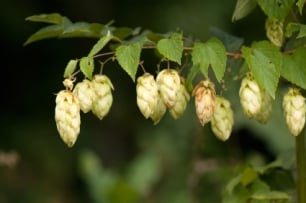
I often hear from brewers who live at altitude asking about how to adjust their beer brewing recipes. Living at a higher altitude means that both water and wort will boil at a lower temperature which leads to lower hop utilization.
I spent six years living near Albuquerque in New Mexico, with four of those in the East Mountains at some 7200 feet (2194 m) above sea level. At altitude we had to adjust not only beer brewing activities but even simple recipes like baking bread.
Effects of High Altitude Beer Brewing
The primary effect of brewing beer at high altitude is that it lowers the temperature at which water and wort boils. While water boils at 212 F (100 C) at sea level, the boil temperature drops about 6 F (3.2 C) for every 3200 feet (1000 m) of altitude. So if you brew at 6400 feet (2000 m), your boil temperature would be approximately 200 F (93.6 C).
As the boil temperature is reduced, hop utilization also drops off. In fact it drops off fairly rapidly with temperature. This means you may need to either add more hops or increase your boil time when brewing at altitude to achieve the same bitterness level.
How much does it drop off? My friend John Palmer wrote an article for the MBAA, Vol 54, No 3, 2017 entitled “A Look at Isomerization Reduction Due to Altitude” where he leverages the work of Mark Malowicki and Thomas Shellhammer who studied hop isomerization versus temperature. This work has become increasingly important to estimate the hop utilization in whirlpool hops.
It turns out that the drop off is pretty substantial. From Palmer’s paper:
- 500 meters (1640 ft) – Water Boils at 209 F (98.4 C) – Utilization is 87%
- 1000 meters (3281 ft) – Water Boils at 206 F (96.8 C) – Utilization is 76%
- 1500 meters (4921 ft) – Water boils at 203 F (95.1 C) – Utilization is 67%
- 2000 meters (6562 ft) – Water boils at 200 F (93.5 C) – Utilization is 58%
So if we consider a typical mountain brewer at a location like Denver, CO where the altitude is 5000 feet (1500 meters), you can see that they are getting only about 67% or 2/3rd the utilization of a brewer at sea level. So they would need to add roughly 40% more hops or boil the hops much longer to achieve the same bitterness level in IBUs.
Altitude Adjustments in BeerSmith 3
Fortunately BeerSmith 3 software has the altitude adjustments built in so you don’t need to do these calculations by hand. You can enter the altitude into your equipment profile and it will adjust all of the hop utilization calculations to include your local altitude effects.
To adjust your equipment profile, go to Profiles->Equipment within the software and find your personal equipment profile. Double click on the equipment profile to edit it and look for the section titled Hop Utilization and Whirlpool Options. Under that section set the Boil Elevation to your local elevation in feet or meters.
Now when you use this equipment profile in a recipe, it will adjust the hop utilization calculations to fit your altitude. You can also use the equipment profile to scale other people’s recipes which will adjust those recipes to match your equipment and altitude.
I hope you enjoyed my brewing tip for this week. Thanks for joining me on the BeerSmith Home Brewing Blog. Be sure to sign up for my newsletter or my podcast (also on itunes…and youtube) for more great tips on homebrewing.
I am interested in discussing this more. I am likely in the same high altitude location you mentioned here and recently started home brewing. The hops from the Northern Brewer kits I am currently using are certainly under utilized at 7300 ft.